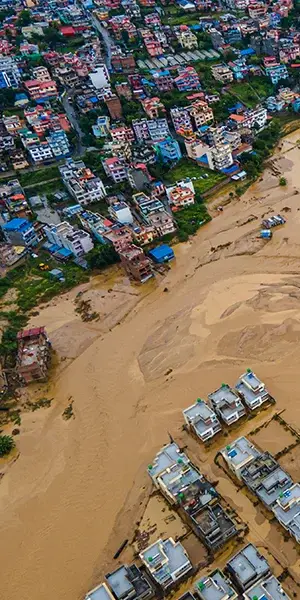(Re)in Summary
• Predictive modelling and micro-insurance solutions are making coverage more accessible, particularly in underserved markets, said industry leaders at Insurtech Insights Asia.
• A stark disconnect between C-suite vision and middle management execution is a key barrier to technological progress.
• Survival in today’s insurance landscape demands rapid adaptation to emerging risks, with success hinging on the smart deployment of technology to deliver accessible, affordable protection.
Industry leaders at the Insurtech Insights Asia Conference 2024 tackled pressing challenges facing the insurance sector, spotlighting how technology and adaptable business models could help weather market volatility while ensuring broader access to insurance protection.
The timing of this high-level discussion couldn’t be more critical, as insurers worldwide grapple with a perfect storm of climate change impacts, evolving cyber threats and mounting geopolitical tensions. These challenges are pushing the industry to rethink its traditional approaches to risk management.
“Resilience means how fast and how effectively the city will recover from external shock or damages,” said Peak Re’s Chief Economist Clarence Wong. He pointed to government infrastructure investments that, despite initial costs, pay off handsomely in the long run. “If something is not insurable, it is not valuable. A lot of those projects need financing to develop further from the start phase to a breakout phase [and] the mature phase.”
Predictive modelling emerged as a bright spot. During the panel discussion, the experts described its wide-ranging applications – from sizing up climate risks to forecasting health outcomes and measuring geopolitical impacts. “Insurance is very important in supporting the building of societal and economic resilience, both on the national, operational and also individual level or the household level,” said Wong.
Jessie Dongxia Chen
Deputy General Manager at Taiping Financial Holdings CompanyJessie Dongxia Chen, Deputy General Manager of Taiping Financial Holdings Company, brought practical insights on leveraging technology. She made a compelling case for tech-enabled micro-insurance solutions, showing how they could reach previously underserved communities in remote areas.
“We can use historical data and trends to predict not only natural disasters, but some common health problems for particular demographics,” said Chen. “With emerging technology, we can offer more micro apps and micro-insurance products to cover some of their risks, like health insurance and accidents, for people in remote areas.”
“Using the predictive model and along with some wearable devices, we provide and suggest to customers to take up healthier habits, and this will reduce the risk. In the long run, based on the improvement of such habits, we can reduce their insurance premium,” added Chen.
Still, obstacles are holding back technological progress in the industry.
An adoption gap
Alexander Paruschke, Managing Partner of apcore, didn’t pull any punches when highlighting the technology adoption gap between top executives and middle management. “We see today lots of clients with an adherence asymmetry among C-suite level and middle management people in terms of giving out a global vision and strategic goal for technology integration, and the actual capabilities of management to do so,” he explained.
Paruschke stressed the urgent need for better integration with external partners and business models that can keep pace with market changes. “Resilience means you’re able to adapt the channels through which you’re communicating with the customer, adapt your product lines, and leverage technological capabilities instead of the analogue way of interacting,” he said.
The conversation also hit several hot buttons, from the potential of parametric insurance to speed up claims, to the possibility of offering premium discounts for resilience measures. One particular topic centred around cyber insurance, with the panellists tracking its journey from an “uninsurable” risk to a growing market segment, though still falling short of natural disaster coverage.
“I remember maybe 10 to 15 years ago when I was still in my previous company, our CEO said that cyber insurance is uninsurable because of uncertain accumulation. But we have seen that cyber insurance is now viable,” said Wong. However, he noted, “the cyber insurance gap is at least 100 times bigger than the natural catastrophe gap.”
“There’s a huge difference between the real risk you will find in cyberspace and the adoption rate of people and companies covering that risk. My prediction is that the adoption rate is going to go up quite heavily throughout the next 10 years,” said Paruschke.
Clarence Wong
Chief Economist at Peak ReThe panellists underscored the challenge of explaining complex risk scenarios to customers, especially regarding the increasing frequency of extreme weather events. “Since climate change is affecting a lot of these climate barrier rules, what we are seeing is actually an increase in both the frequency and also the severity of those secondary parallel or extreme weather events,” explained Wong.
“What we develop as the premium level is a price signal that reflects our assessment of the risk or the riskiness of certain assets,” said Wong. “If we continue to increase prices to compensate for the difference and severity effect of climate change, we will eventually price ourselves out of markets. People will not be able to afford insurance anymore.”
The session wrapped up with a hard look at the hurdles of adapting sophisticated insurance models for emerging markets. “In a more globalised or interconnected world, you have higher complexity, and therefore more difficulty to predict what’s going to happen and even to predict what’s going to impact your model,” said Paruschke.
If the panel is any indication, it’s that smart use of technology and innovative approaches to inclusive insurance will be key to bringing protection to developing economies.
























